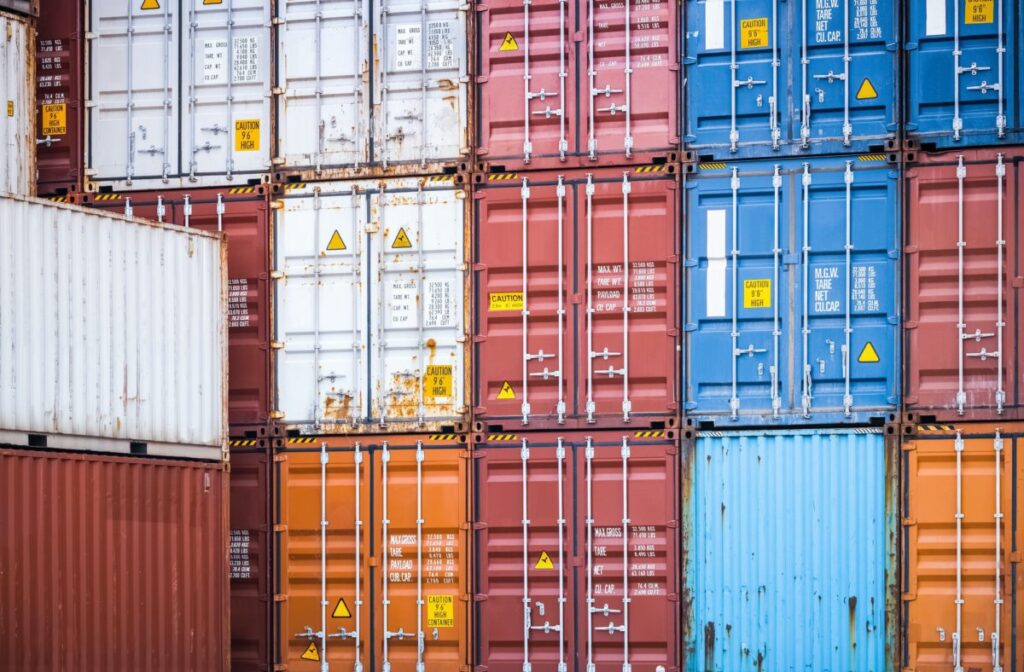
Einführung
In our increasingly interconnected world, the efficient movement of goods is pivotal to global trade and the functioning of our modern society. At the heart of this logistical marvel are cargo containers, the unsung heroes that quietly revolutionized the way we transport goods. In this article, we’ll explore the fascinating world of cargo containers, their history, types, importance, and their impact on global commerce.
The History of Cargo Containers
The concept of containerized cargo isn’t new, but the system we use today was developed in the mid-20th century. The American entrepreneur Malcolm McLean is often credited with the innovation. In 1956, he introduced the first standardized cargo container, a 33-foot-long steel box that could be loaded onto ships, trains, and trucks without unloading its contents. This sparked a revolution in the shipping industry, making it possible to efficiently transport goods from factories to ports, across oceans, and all the way to your local store shelves.
Types of Cargo Containers
Today, cargo containers come in various sizes and types, each designed for specific cargo and transportation needs. The most common types include:
Standard Dry Containers: These are the iconic rectangular steel boxes used for most general cargo, from electronics to clothing. They come in 20-foot and 40-foot lengths.
Refrigerated Containers: Known as “reefers,” these containers are equipped with cooling systems and are crucial for transporting perishable goods like fruits, vegetables, and pharmaceuticals.
Flat Rack Containers: These have collapsible sides and no roof, making them ideal for oversized cargo like machinery and heavy equipment.
Open-Top Containers: They lack a solid roof and are used for tall or bulky cargo that can’t fit into standard containers, such as construction materials.
Tank Containers: Designed to transport liquids, chemicals, or gases, these containers have cylindrical tanks made of stainless steel.
The Importance of Cargo Containers
Efficiency: Cargo containers have streamlined the entire logistics process. The standardized sizes mean that loading and unloading is a breeze, reducing turnaround times at ports and terminals.
Security: Once sealed, cargo containers are extremely secure, making it difficult for unauthorized access or tampering. This has significantly reduced pilferage during transportation.
Protection: Cargo containers protect goods from the elements, ensuring that they arrive in the same condition as when they were loaded.
Global Trade: Without cargo containers, the rapid growth of international trade and the global supply chain wouldn’t be possible. They have driven globalization and increased access to products from all over the world.
Environmental Impact: Containerization has led to more efficient transport systems, which in turn has had a positive impact on reducing transportation-related emissions and energy consumption.
The Impact on Global Commerce
The rise of cargo containers has had a profound effect on the world economy. They’ve made it possible for businesses to tap into a global market and have enabled just-in-time inventory practices that minimize holding costs. Some key impacts include:
Lower Costs: The efficiency of containerization has significantly reduced transportation costs, enabling more affordable goods for consumers.
Market Access: Smaller businesses can now participate in international trade, leveling the playing field and promoting competition.
Supply Chain Integration: Cargo containers have led to a more integrated global supply chain, allowing for more efficient production and distribution processes.
Economic Growth: Ports and logistics hubs have sprung up around the world, driving economic development in many regions.
Schlussfolgerung
Cargo containers are often overlooked, yet they are the lifeblood of global trade and commerce. These simple, standardized boxes have transformed the world of logistics, making it possible for goods to traverse the globe efficiently and affordably. As we continue to navigate the complexities of an interconnected world, let us not forget the unassuming cargo container and its crucial role in shaping the way we live, consume, and do business on a global scale.
 3M
3M Ansell
Ansell Dellta Plus
Dellta Plus Drager
Drager edelrid
edelrid Honeywell
Honeywell JUTEC
JUTEC Seeland
Seeland MSA
MSA Neues Schwein
Neues Schwein Weldas
Weldas